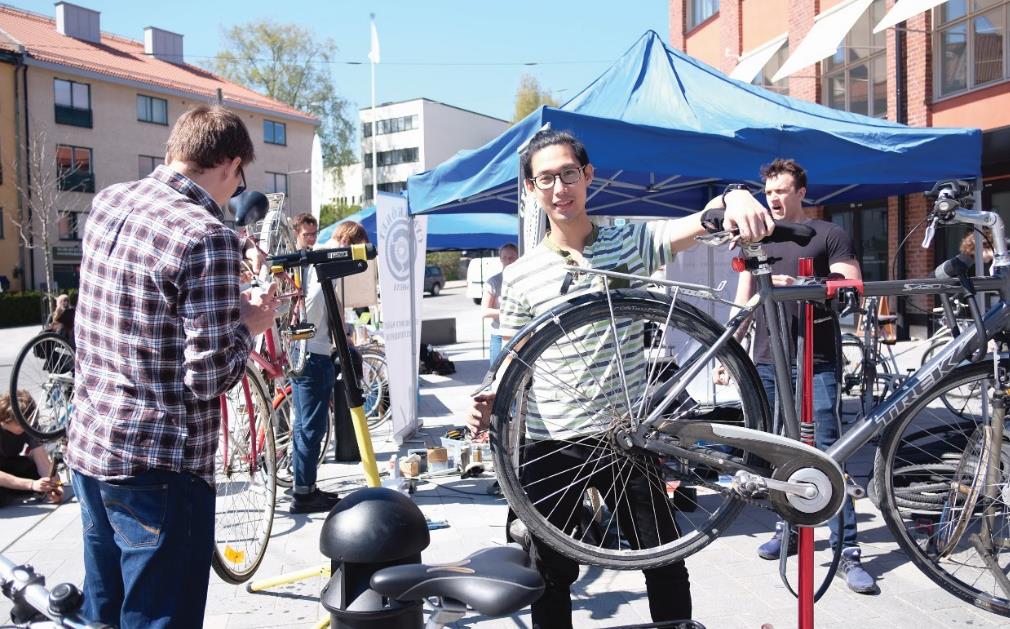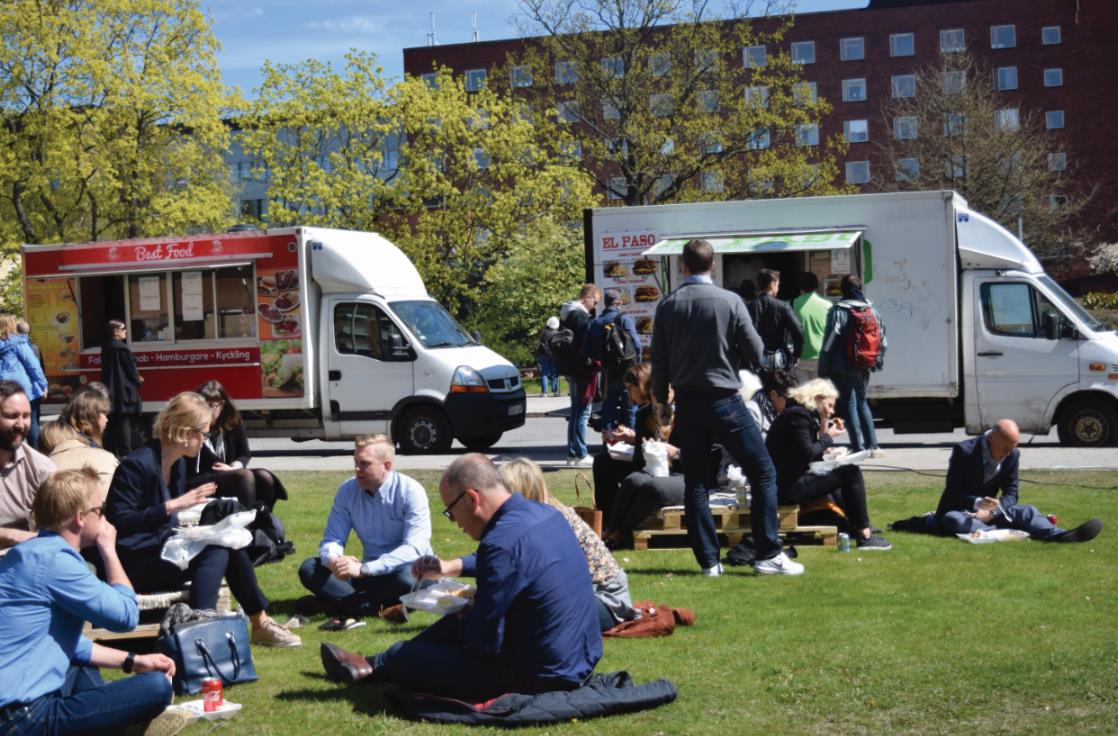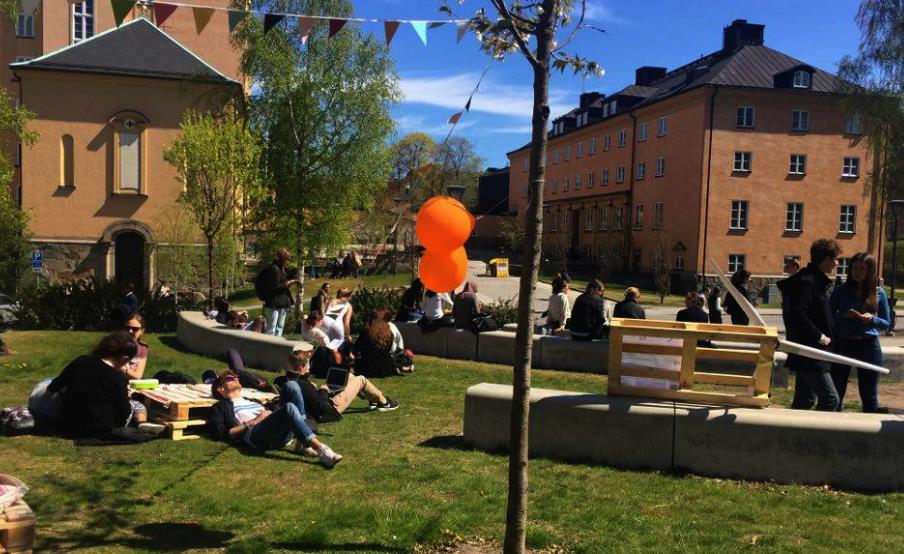Sustainability and Innovation Drive Improvements in KTH Public Spaces
Sustainable Placemaking Week at KTH campus – Spring 2017
Sustainable Placemaking has turned KTH into an active playground for a student-driven urbanism project. Employing innovative urban design and planning techniques, the project aims to catalyse improvements in the social and physical environment of the flagship KTH campus on Valhallavägen in Stockholm.
Motivated by a lack of interaction between disciplines and the need for better public spaces on campus, students from the KTH Master’s Programme in Urbanism Studies are learning how cutting across academic silos can help improve public spaces — and they’re starting with their own university.
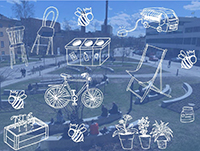
A process known as Placemaking, designed by the NYC-based non-profit Project for Public Spaces (see sidebar), is being used to create community and encourage involvement around the transformation of campus public areas. Sustainability and innovation are the central themes of the project, which aims to drive improvements in the social and physical environment . The project resulted in the first Sustainable Placemaking Week in May, 2017.
KTH Royal Institute of Technology has long placed a strong focus on sustainability through education, research, and business networks. But sustainability activities most often take place inside buildings and within the physical and institutional borders of the school. Not so much happens outdoors in the shared open spaces on campus. Yet public spaces fill important functions, allowing students, faculty, staff and visitors to meet spontaneously, interact and sometimes even invent new ideas. The university faces both challenges and opportunities to improve livability through better public spaces that can trigger innovation by making sustainability accessible to everyone. The main objective of Sustainable Placemaking is to “bring sustainability outside” while making the outdoor spaces of the campus more inviting and enjoyable.
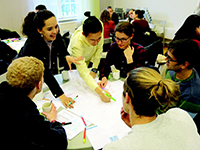
To prepare for the May 2017 event, students of the one-year master in Urbanism Studies at KTH organised a public workshop to solicit the community’s ideas and desires, to foster engagement, and to generate creative input. Attendees were also able to experiment with the Placemaking method in practice on campus, thanks to the help of professionals. Placemaking is a collaborative process by which people can transform unused spaces into more vibrant and enjoyable places.
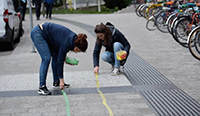
Realised in a spirit of DIY (do it yourself) and “quicker, lighter, cheaper”, the collaborative 2-day event was comprised of a variety of activities located in different areas on campus. Sidewalks were marked with coloured lines that would lead people to these areas. Curious visitors could then explore the campus and discover existing efforts towards sustainability, examples being the KTH beehives as well as different projects led by KTH students.
New experiments that were tested to make the campus more sustainable in the long run were also shown, including recycling bins, outdoor seating areas, or the connection of the food trucks to the electricity grid so that they would not have to use their polluting and noisy generators. Other events aimed at enhancing sustainable behaviour among campus users, such as a bike workshop, honey tasting, an organic gazpacho tasting, a workshop to learn how to reuse food scraps, informative posters, and much more. The Sustainable Placemaking Week attracted visitors around campus, successfully putting existing projects on the map while simultaneously generating new ideas for the future.
Promising results
The results obtained during Spring 2017 highlighted the potential of KTH’s public spaces and demonstrated that a bottom-up collaboration between students and other stakeholders could lead to creative innovation. Although the experiments were temporary, long-term decisions can soon be taken as a follow-up to the event, based on the existing collaboration between the participants and different stakeholders.
“Building the best academic facilities is not enough to foster a well-rounded educational experience. Comfortable and lively public spaces provide informal places on and near campuses that can bring students, faculty, staff, visitors, and the community together" (pps.org). KTH, as an applied university with an extensive pool of resources and networks, could quickly become a leader in sustainability and innovation. Indeed, the KTH Campus’ Vision 2027 calls for “A lively campus for a sustainable future”, and such a goal can be reached only if actors include improvements in public spaces.
The need for KTH to focus on its public spaces has never been greater. The campus is undergoing a major transformation; in the near future it will provide housing to more than 1000 students, and therefore should function as a liveable environment. "We must continue to generate the conditions for serendipitous encounters — the unexpected conversation that becomes a fruitful partnership or the passing observation that sparks a discovery or innovation." (Drew Faust, Harvard Common Spaces Program) and “These all point to the value of treating the campus as a single environment,” he says, “and not just an agglomeration of facilities.” (pps.org). To achieve such ends, the involvement of students but also other actors is crucial.
Co-creation
Sustainable Placemaking Week was primarily student-driven, emerging from a course that addressed placemaking. The method sparked interest among the students who decided to experiment in their immediate surroundings at KTH campus.
PhD student Rosa Danenberg, a teacher in the placemaking course, helped to bring together various actors who could contribute. Mathilde Riou and Elisa Carvalho Diniz, the main student organisers, were in charge of planning the event and mediating between the different parties at KTH. They organised outreach to stakeholders and student groups; fostered and maintained community engagement through communication, meetings and interviews; designed creative content such as promotional material, posters and maps; and ultimately planned and built the event.
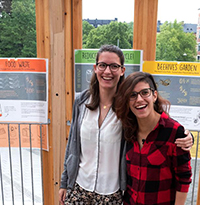
The project was supported by the KTH Sustainability Office and Akademiska Hus (property owner) which are the two main stakeholders on campus and are in charge of the decisions regarding public spaces. Both were appealed to the project, since it involved student participation and bottom-up solutions, in contrast to the traditional tendency for interventions to be driven from the top-down.
Another partner in the project was the Centre for the Future of Places (CFP), also located at KTH campus. CFP focuses on sustainable urban development and aims to shift focus from buildings to places and human interaction. Since the Sustainable Placemaking Week was a practical implementation of that vision, CFP supported the project by involving two partner organisations, which worked with the students and advised them throughout the process: Landskapslaget, a Stockholm-based urban planning and landscape architecture company, and STIPO, a Netherlands-based multi-disciplinary consultancy company that works with urban strategy and city development.
In later stages, OpenLab, the centre for societal challenges focused on improving the quality of life, also located at KTH Campus, and Ass. Prof. Andrew Karvonen, who is founder of the Living Lab at Manchester and employed at KTH’s Division of Urban and Regional Studies, were involved to extend the team of collaborators and share their experiences. And, of course, nothing could have been achieved without the involvement of the inspiring and creative students who joined the project along the way. They were very engaged in sustainability issues and in making the campus a better place.
Are you interested in the follow up and/or engaged in organizing the next Sustainable Placemaking Week? Send an email to Rosa Danenberg rosad@kth.se

